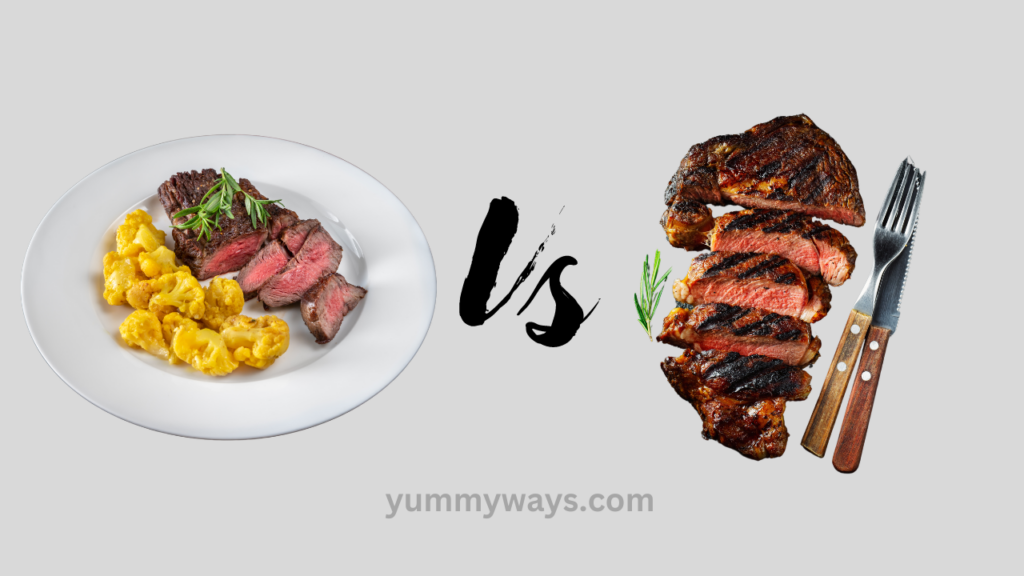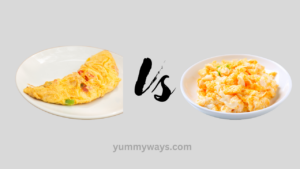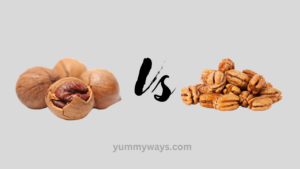Chuck steak and ribeye are two popular cuts of beef with different characteristics. Chuck steak is a budget-friendly cut from the shoulder area, known for its rich flavor but can be tougher.
Ribeye, on the other hand, comes from the rib section and is known for its tenderness, marbling, and bold flavor.

Also Read: Shell Steak vs NY Strip: Which Will You Choose?
Contents
Chuck Steak
Chuck steak, known for its rich flavor and affordability, is cut from the shoulder area of the cow. In comparison, ribeye steak is marbled and tender, making it a premium choice. Both cuts have their unique profiles, with the chuck steak offering a more robust, beefy taste, while the ribeye boasts a tender, juicy texture.
Chuck steak is a flavorful, budget-friendly cut of beef that comes from the shoulder area of the cow. It is a versatile cut that can be used in various cooking methods, making it a popular choice for home cooks.
Definition And Cut
Chuck steak comes from the shoulder area of the cow and typically includes parts of the shoulder blade bone. It is a tough cut of meat with a good amount of connective tissue.
Flavor Profile
Chuck steak boasts a rich, beefy flavor with a good amount of marbling throughout the meat. When cooked properly, it becomes tender and juicy, making it a delicious option for those looking for a flavorful meal.
Best Cooking Methods
Chuck steak is best suited for slow cooking methods, such as braising, stewing, or slow roasting. This allows the connective tissues to break down, resulting in a tender and flavorsome dish. It can also be used for ground beef or diced for stews and casseroles.
In summary, Chuck steak is a flavorful and versatile cut of beef that can be used in a variety of dishes. Its rich flavor and affordability make it a popular choice for home cooks looking to create delicious, budget-friendly meals.
Ribeye
Chuck steak and ribeye are both popular cuts of beef, but they differ in tenderness and flavor. While chuck steak is known for its rich, beefy taste and affordability, ribeye offers a more tender and buttery texture, making it a favorite among steak lovers.
Also Read: Salisbury Steak vs Hamburger Steak: Decoding the Key Differences and How to Choose
Definition And Cut
Ribeye is a popular cut of beef that is known for its rich marbling and intense flavor. It is one of the most tender and flavorful cuts, making it a favorite among steak enthusiasts. The ribeye comes from the rib section of the cow, specifically the rib primal, which is located between the chuck and the loin. This section is well-exercised, resulting in the tenderness and depth of flavor that the ribeye is known for.
Flavor Profile
The ribeye steak is highly regarded for its exceptional flavor profile. It has a rich, buttery taste that comes from the abundant marbling throughout the meat. This marbling is made up of fat that melts during cooking, infusing the steak with its succulent flavor. Ribeye steaks also have a pronounced beefy flavor that is often described as juicy and savory. When properly cooked, the ribeye offers a tender and melt-in-your-mouth texture that is unmatched.
Best Cooking Methods
When it comes to cooking ribeye steaks, several methods can help enhance its flavor and tenderness. Here are some popular and recommended cooking methods:
- Grilling: Grilling is a fantastic way to cook ribeye steaks. The high heat and direct flame help to sear the steak quickly, locking in the juiciness and creating those coveted grill marks. For best results, preheat the grill to high and cook the steak for about 4-5 minutes per side for medium-rare.
- Searing: Another excellent method is to sear the ribeye steak in a hot skillet or cast-iron pan. This method allows for a beautiful crust to form on the outside while keeping the inside tender and juicy. Heat a skillet over high heat, add oil, and sear the steak for about 3-4 minutes per side.
- Oven Roasting: Roasting a ribeye steak in the oven is a reliable method that ensures even cooking. Preheat the oven to a high temperature, around 400°F (204°C). Place the steak on a rack in a roasting pan and cook for approximately 15-20 minutes for medium-rare.
Regardless of the cooking method you choose, it is crucial to let the ribeye steak rest for a few minutes before serving. This allows the juices to redistribute throughout the meat, resulting in a more flavorful and tender steak.
Nutritional Value
When it comes to choosing between chuck steak and ribeye, the nutritional value is an important factor to consider. Both cuts of beef offer a range of essential nutrients, but they do have some differences. Let’s take a closer look at the protein content, fat content, and vitamins and minerals found in both chuck steak and ribeye.
Protein Content
Protein is an essential macronutrient that plays a crucial role in various bodily functions, including muscle development and repair. Both chuck steak and ribeye are excellent sources of protein. However, ribeye tends to have a slightly higher protein content compared to chuck steak. On average, a 3-ounce serving of ribeye contains around 22 grams of protein, while the same serving size of chuck steak provides approximately 21 grams of protein.
Fat Content
When it comes to fat content, there is a notable difference between chuck steak and ribeye. Chuck steak is known for its higher fat content, which contributes to its rich flavor and tenderness. On the other hand, ribeye is renowned for its marbling, which refers to the intramuscular fat that runs through the meat. This marbling not only enhances the taste and juiciness of the ribeye but also increases its fat content. As a result, ribeye generally contains more fat than chuck steak, making it a more indulgent choice for those who enjoy a fattier cut of beef.
Also Read: Ribeye vs Tbone: Comparing Ribeye and T-Bone Steaks
Vitamins And Minerals
Both chuck steak and ribeye offer a range of vitamins and minerals that are essential for maintaining good health. These cuts of beef are particularly rich in B vitamins, zinc, and iron. B vitamins play a vital role in energy production, while zinc supports a healthy immune system. Iron is essential for oxygen transport in the body and plays a role in preventing iron deficiency anemia. However, it’s worth noting that the exact vitamin and mineral content may vary slightly depending on factors such as the animal’s diet and the cut of meat.
In summary, both chuck steak and ribeye provide valuable nutritional benefits. While ribeye tends to have a slightly higher protein content, it also contains more fat due to its marbling. Chuck steak, on the other hand, is a fattier cut but still offers a good amount of protein. Ultimately, the choice between these two cuts will depend on your personal preferences and dietary goals.
Cost And Availability
When it comes to deciding between chuck steak and ribeye, considering the cost and availability can be crucial. Let’s take a closer look at how these two cuts of beef compare in terms of pricing and where you can typically find them.
Pricing Comparison
Chuck steak is generally more affordable than ribeye, making it an excellent choice for budget-conscious consumers. The lower cost of chuck steak allows individuals to enjoy a delicious beef dish without breaking the bank. On the other hand, ribeye tends to be more expensive due to its superior tenderness and marbling.
Common Places To Find
Chuck steak is commonly found in most grocery stores and butcher shops, as it is a popular and versatile choice for consumers seeking an economical beef cut. Its widespread availability makes it easily accessible and convenient to purchase. Conversely, ribeye is typically available in higher-end grocery stores and specialty butcher shops, catering to those who are willing to invest in a premium beef cut for a special occasion or gourmet meal.
Also Read: Brats vs Sausage: Unraveling the Tasty Difference
Cooking Techniques
Cooking Techniques are crucial when preparing Chuck Steak vs Ribeye. Each cut requires specific methods to ensure optimal flavor and tenderness.
Grilling
Grilling enhances the smoky flavor of both Chuck Steak and Ribeye. Preheat the grill and sear the steaks for a few minutes on each side for the perfect char.
Pan-searing
Pan-searing offers a convenient indoor cooking option. Heat a skillet over high heat, sear the steaks briefly, then finish in the oven for juicy results.
Broiling
Broiling is a high-heat method suitable for both cuts. Place the steaks on a broiler pan, set the oven rack to the top position, and broil for a few minutes per side.
Taste Test
Let’s settle the Chuck Steak vs Ribeye debate with a taste test.
Blind Taste Comparison
- Properly cooked, Chuck Steak offers a rich, beefy flavor.
- Ribeye, known for its marbling, provides a buttery texture.
- Both steaks will be sampled without prior knowledge to ensure fairness.
Popular Vote Results
- Participants will vote on which steak they prefer.
- The popular vote will reveal the preferred cut among the tasters.
Conclusion
When it comes to choosing between chuck steak and ribeye, both have unique attributes. Whether you prefer the richness of a ribeye or the budget-friendly option of chuck steak, each cut offers a delicious dining experience. Ultimately, the choice comes down to personal preference and the occasion.

